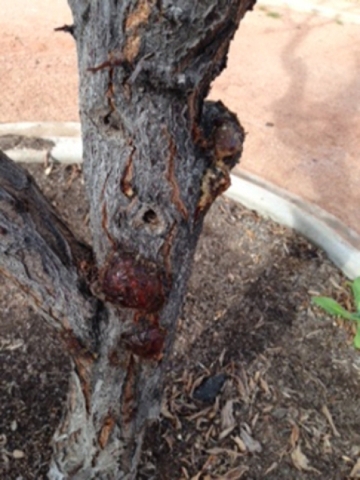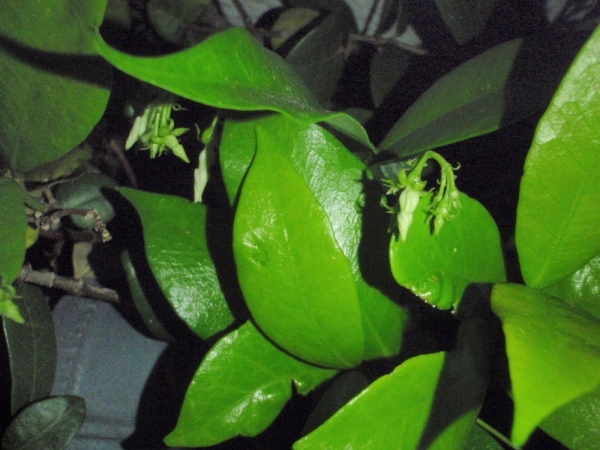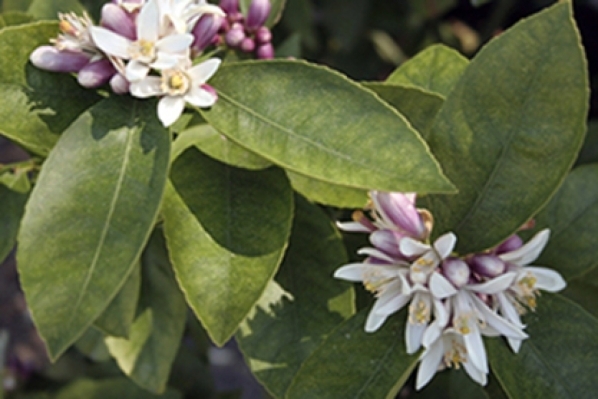Temperature-sensitive plants need protection
Q: When can we cut back star Jasmine and plant lantana?
A: Because lantana could still freeze, it is best to wait until the end of February to plant it. Now is a great time for planting anything not damaged by freezing temperatures.
Dig a hole three times wider than the container. Use soil taken from the hole and amend it 50/50 with compost plus a handful of granular fertilizer high in phosphorus. As an alternative, mix a water-soluble fertilizer high in phosphorus in a bucket with water, and use this solution when watering the first time.
The general rule of thumb for when to prune plants appreciated for their flowers is to prune soon after the flowering period has finished. This is because the flower buds for the next cycle of blooms are formed soon after flowering is over. Pruning now could eliminate the spring flowers.
After pruning, always fertilize plants. Flowering plants should receive a high phosphorus fertilizer at least once during the year.
Q: I have a small greenhouse I would like to heat at night to prevent the freezing of some seedlings. I am guessing I will only need heat for the month of February. I was thinking of a small space heater.
A: It is much easier and more effective to provide bottom heat to warm seedlings than a space heater that only warms the air. Provide bottom heat by using waterproof heating mats beneath the seedling containers or trays. They are available locally from nurseries and garden centers.
Many vegetables that grow during the summer months require warm soils for good germination. Seeds like tomatoes and peppers will fail or germinate very slowly if the soil is not warm.
Years ago, we would place seedling trays on top of the television or refrigerator where it is warm enough to complete speed germination. As soon as they germinated, they would be placed in some light or directly under very bright lights.
Drape plastic or a light blanket over the seedlings and heating mat at night, and remove it during the day. Seedlings require 6 to 8 hours of full sunlight, or the same intensity from electrical lights, as soon as they germinate. Sunlight intensities or durations shorter than this will produce spindly transplants that will grow and transplant poorly.
You don't need expensive grow lights for growing transplants. Fluorescent lights or LEDs are fine, but they must be placed within an inch of the leaves to produce enough intensity to support good plant growth.
Be very careful when using incandescent bulbs, or lightbulbs, for growing seedlings. They produce a lot of heat and damage plants at distances close enough to produce enough light intensity. I leave electrical lights on about 16 hours each day.
Q: I have an ash tree that appears to be dying. I am considering taking it out but would like to have someone look at it before I do.
A: The usual problem here with ash trees has been a disease called ash decline or ash dieback. I have posted questions I received regarding this problem on ash trees along with pictures of what it looks like and what to do if you have it.
Send some pictures to me of the tree showing the problem. I need close-ups of the leaves as well as a picture of the entire tree. Look at the pictures I have posted here or on my blog to confirm it. This disease is quite easy to identify from pictures.
If you are certain the tree has this disease, it should be removed. There is no cure for it.
Q: My plum tree has sap coming from it in bubbles. Does it have some sort of disease?
A: Sap coming from a tree is a response by the tree to some sort of damage. Damage that causes sap to ooze in bubbles from the trunk or limbs can be caused by the environment, disease or insects.
Plums are normally very sappy. When plums are pruned during the growing season, they respond to fresh wounds by releasing a large amount of sap. Trees that produce sap in response to damage or an attack is their method of protecting themselves.
When insects, such as borers, burrow into the tree, the release of sap can engulf these burrowing insects and suffocate them. If the burrowing insect is still active, chewing and feeding away when sap is released, these bubbles of sap will be dark in color but cloudy. The sap is cloudy because it is full of sawdust or wood chips from the feeding by these chewing insects.
If the tree successfully engulfs and kills this destructive critter, the sap continues to be dark but free of sawdust or wood chips and therefore clear. Sap also helps flush disease organisms from wounds.
The presence of sap from plums and apricots does not always mean there are disease or insect problems. Sometimes environmental damage to the tree can cause a release of sap. Environmental damage can occur from intense sunlight, heat and water stress.
Take a sharp knife and remove the bubbles of sap all the way to the surface layer of the tree. Remove the surface layer of the tree so that you can see what's going on just under the bark. Look at the exposed area under the bark, and inspect it for insect damage. You may find the insect itself.
Regardless, it is a good idea to remove the sap bubble and inspect the exposed limb or trunk just under the bubble. If an insect or its damage is present, clean out the damaged area so that everything looks healthy and the tree can heal on its own.
There is no reason to apply anything to this wound if the knife was sanitized. Use alcohol to sanitize the knife, heat from a lighter or household sanitizer such as Pine-Sol. Be careful with bleach, even though it is a good sanitizer, because it rusts tools and destroys clothing.
Q: I have two lemon trees, both about 3 feet high, in containers. My Myers lemon is about 10 years old but leaves get fewer and fewer, and it produced only three lemons last year. When is a good time to repot it?
A: Citrus does better in the ground than in containers. Extra management and care is needed when grown in containers. Containers allow more flexibility in freeze protection, but trees growing in them are difficult to irrigate properly.
The usual reason for poor fruit production in citrus, particularly Myers lemon, is freezing temperatures around bloom time or shortly thereafter. They like to bloom in January and February when freezing temperatures still occur. It only takes a light freeze to kill flower blossoms that are unopened, opened or small fruit that has just formed.
Be careful of soil mixes added to containers. Some soil mixes are not very good. Pick a soil mix that has a good reputation, not the cheapest one on sale.
A good time to re-pot them is now. Lay the container on its side, and gently pull the plant and its root ball out of the container. Wash the inside of the container thoroughly.
With a spray nozzle, wash some of the soil mix from the root ball. Remove about one quarter of the roots with sharp and sanitized pruning shears.
Look at the roots and see if they are healthy. The newest and smallest roots should be a creamy white color.
Slide the plant back into the container, and push both upright. Locate the plant and root ball in the center of the container, and add fresh container mix. Adding water with a hose will wash the soil mix into voids and remove air pockets. Gently lift the plant so that soil can wash under it, and elevate the plant to the same depth it was previously.
Fertilize the plant with a fertilizer suitable for citrus. A rose fertilizer or fruit tree fertilizer will work if you can't find a citrus fertilizer.
— Bob Morris is a horticulture expert living in Las Vegas and professor emeritus for the University of Nevada. Visit his blog at xtremehorticulture.blogspot.com. Send questions to Extremehort@aol.com.






















